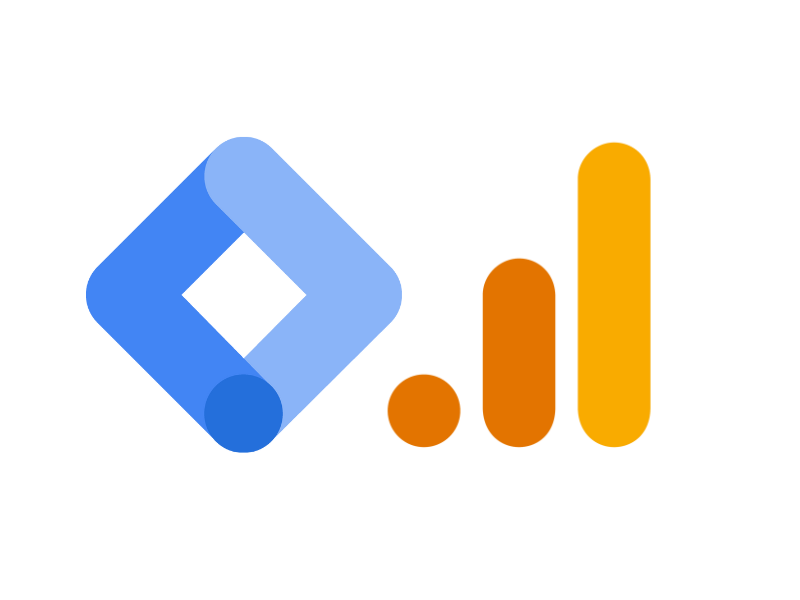Data Analytics is the process of examining data sets to uncover patterns and draw insights. It involves various techniques to analyze raw data and turn it into meaningful information.
In today’s data-driven world, understanding data analytics is crucial for businesses and organizations to make informed decisions. By scrutinizing data through various analytical processes, entities can identify trends, measure performance, and predict future outcomes. Data analytics encompasses a range of fields from basic business intelligence (BI), reporting, and online analytical processing (OLAP) to more complex activities such as data mining, predictive analytics, and big data analytics.
With the exponential growth of data, the importance of analytics has soared, influencing sectors like marketing, healthcare, finance, and beyond. Businesses leverage data analytics to optimize their operations, enhance customer experiences, and outperform competitors. As technology evolves, so does the sophistication of data analytical tools and methodologies, making it a dynamic and essential discipline in the modern digital landscape.

Credit: www.factspan.com
The Rise Of Data Analytics In Business
Data analytics has become a cornerstone of modern business strategies. Businesses of all sizes use data analytics to understand markets better, improve customer experiences, and increase efficiency. The power of data is reshaping industries, transforming how companies operate and compete.
Factors Driving Analytics Adoption
In the quest for competitive advantage, businesses are turning to data analytics. Here are the key factors fueling this trend:
- Volume of Data: Digital activity creates vast data amounts.
- Technological Advances: Improved software makes data easier to handle.
- Competitive Pressure: Companies must adopt analytics to keep up.
- Customer Expectations: Personalized services require data insights.
- Cost Efficiency: Analytics can cut costs and increase profits.
Impact On Decision-Making
Data-driven insights are revolutionizing decision-making processes in businesses:
| Area | Impact |
|---|---|
| Marketing | Enables targeted campaigns and personalization. |
| Operations | Optimizes processes for efficiency and cost-saving. |
| Finance | Improves forecasting and risk assessment. |
| Human Resources | Assists in talent acquisition and management. |
Decision-makers rely on accurate data to make informed choices. Analytics tools help uncover trends and predict outcomes. With this knowledge, businesses strategize with confidence and achieve better results.
Types Of Data Analytics
Understanding data is crucial for making smart decisions in business today. The world of data analytics is divided into several types, each giving unique insights into the data at hand. Let’s examine the most common types of data analytics.
Descriptive Analytics
Descriptive analytics gives us a look at what has happened. It often involves collecting raw data and turning it into an understandable form. It can answer questions like “What were our sales last quarter?” or “How many visitors used our website last month?” Key tools for descriptive analytics include data dashboards and reports. We can track trends over time with the help of metrics and KPIs.
- Uses historical data
- Focuses on summarizing
- Identifies trends and patterns
Predictive Analytics
Predictive analytics takes past data and applies it to forecast future outcomes. It uses techniques like statistical modeling and machine learning. Businesses rely on predictive analytics to make informed guesses. They can predict trends, customer behaviors, and market dynamics. It answers “What could happen in the future?”
- Based on historical and current data
- Employs models and algorithms
- Helps forecast future events
Prescriptive Analytics
Prescriptive analytics goes beyond predicting. It suggests actions we could take to affect desired outcomes. It uses simulation algorithms to advise on possible results. It’s like a GPS providing the route and the best means of travel. Prescriptive analytics can guide decisions in resource allocation, risk management, and operations optimizations. This type is all about answering “What should we do?”
| Action Based | Decision Focus |
|---|---|
| Simulation algorithms | Optimizes possible outcomes |
| Real-time data input | Improves decision making |
Key Metrics And Data Sources
In the realm of Data Analytics, understanding your data is pivotal. Key metrics offer a
a clear view of performance, while diverse data sources enrich this perspective.
Identifying Valuable Metrics
Pinpointing the right metrics can transform raw data into actionable insights.
Here’s how to identify metrics that matter:
- Define clear objectives: Set goals that align with business strategies.
- Know your audience: Understand who the data serves and their needs.
- Relevance: Choose metrics that directly reflect performance.
- Consistency: Ensure metrics are consistent over time for accuracy.
- Comparability: Use metrics that allow for benchmarking against competitors.
Combining Multiple Data Sources
Leveraging various data sources yields a well-rounded analytical view. Consider these steps:
- Assess data quality: Prioritize accuracy and reliability.
- Integrate data: Use tools for merging data from different sources.
- Cross-reference: Compare data points to find meaningful patterns.
The table below highlights common data sources:
| Data Source | Description | Examples |
|---|---|---|
| Internal Systems | Data from within the company | CRM, ERP |
| Customer Feedback | Opinions and reviews from users | Surveys, Comment Sections |
| Web Analytics | Online user behavior data | Google Analytics, Heatmaps |
| Social Media | Engagement and trends on platforms | Facebook Insights, Twitter Analytics |
Data Analytics Tools And Technologies
Data analytics stands at the forefront of business success today. Companies across industries rely on analyzing complex data to make informed decisions. The right tools and technologies can unearth valuable insights hidden within data. Let’s explore the software that helps in this crucial process.
Popular Analytics Software
Businesses require robust analytics software to comprehend market trends, customer behavior, and operational efficiencies. Below is a list of widely used analytics tools that cater to diverse data needs:
- Tableau – Offers interactive data visualization
- Microsoft Power BI – Integrates well with other Microsoft products
- Google Analytics – Ideal for tracking website and app performance
- SAS – Provides advanced analytical methods
- R and Python – Programming languages with powerful libraries for data analysis
Choosing The Right Tool For Your Business
Selecting the right analytics tool is critical. Determine your business needs first:
| Requirement | Tool Feature |
|---|---|
| User-Friendliness | Choose tools with an intuitive interface |
| Scalability | Ensure the tool grows with your business |
| Data Integration | Must work well with your existing data systems |
| Cost | Consider the tool that fits your budget |
Keep in mind the usability, support, and community around the tool. Invest in training for your team to leverage the tool’s full potential.
Case Studies: Transformations Through Analytics
Analytics transform businesses every day. Real-world case studies show us how. They turn data into stories of success. These stories inspire and guide others. Below are examples from the retail and manufacturing sectors. They highlight the power of data analytics.
Retail Sector Successes
Companies in retail are winning with data. Their stories feature increased sales and improved customer satisfaction.
- Better stock management leads to fewer overstock issues.
- Personalized shopping experiences turn visitors into loyal customers.
- Dynamic pricing strategies boost profits by adapting to market trends.
One retail giant used analytics to revamp its inventory system. The outcome? A remarkable drop in out-of-stock scenarios. Shoppers now find what they need anytime.
Manufacturing Industry Insights
Manufacturers are reinventing production with data. They cut costs and shorten the time to market.
- Enhanced product quality minimizes returns and raises customer trust.
- Optimized supply chains ensure timely delivery of materials.
- Preventive maintenance schedules keep machines running smoothly.
A leading car manufacturer embraced analytics. Its result: a 25% reduction in inspection time. It now builds cars faster without compromising on quality.
SEO-friendly content example for Data Analytics blog post with HTML syntax suitable for a WordPress site.
Overcoming Challenges In Data Analytics
Mastering data analytics brings huge rewards. Yet, it often feels like solving a complex puzzle. Data quality issues and skill shortages are two big pieces. Let’s tackle these challenges together.
Data Quality And Cleaning
Data quality is vital for accurate analytics. Poor data leads to poor decisions. How can you fix this?
- Implement data cleaning protocols.
- Use software tools to automate the process.
- Regularly review data for inconsistencies.
Data cleaning involves:
- Getting rid of duplicates.
- Correcting errors.
- Filling missing values.
Once cleaned, data becomes a powerful tool for insights.
Skill Gaps And Training
Skill gaps can slow down analytics progress.
| Action | Benefit |
|---|---|
| Assess team skills | Find what’s missing |
| Offer training | Boost analytics ability |
| Hire experts | Fill the skill gap fast |
Start with online courses or workshops.
Create a team with both technical and business knowledge.
This approach ensures an analytics team ready to tackle any challenge.
Future Trends In Data Analytics
Data analytics constantly evolves, shaping industries and decision-making. The next phase anticipates transformative trends. Key drivers will be AI, machine learning, and predictive capabilities. Understanding these trends benefits professionals and companies alike.
The Role Of AI and Machine Learning
Artificial Intelligence (AI) and machine learning are revolutionizing data analytics. These technologies turn data into actionable insights with unprecedented speed and accuracy. Let’s explore what they bring to the table:
- Automation in data processing reduces human error.
- Advanced analytics capabilities predict outcomes with high precision.
- AI algorithms self-learn and improve over time for better analysis.
Businesses that integrate these tools gain a significant edge. They optimize operations, enhance customer experiences, and drive innovation.
Predicting Market Shifts
Market dynamics are notoriously difficult to predict. However, with new data analytics tools, organizations can foresee changes more reliably. This foresight is crucial for staying ahead. Highlights include:
- Use of real-time data to capture market pulses.
- Identification of emerging trends speeds up strategic response.
- Analysis of consumer behavior unlocks new opportunities.
Analytics enable companies to pivot swiftly and confidently. Staying informed about these trends propels businesses toward sustainable success.

Credit: www.linkedin.com

Credit: www.upwork.com
Frequently Asked Questions Of Data Analytics
Is Data Analytics A Good Career?
Yes, data analytics is a promising career. It offers diverse opportunities, high demand, and competitive salaries across various industries.
What Are The 5 Types Of Data Analytics?
The five types of data analytics are descriptive, diagnostic, predictive, prescriptive, and cognitive analytics. Each type offers unique insights for data-driven decision-making.
Is Data Analytics Difficult?
Data analytics can present challenges due to its complexity, requiring a strong grasp of statistical methods and problem-solving skills. Yet, with proper training and tools, it becomes manageable.
Does Data Analyst Require Coding?
Data analysts typically need to know coding to manipulate and analyze data effectively. Proficiency in programming languages like SQL, Python, or R is often essential.
What Is Data Analytics?
Data analytics involves the process of examining datasets to conclude the information they contain. Data analytic techniques enable you to reveal trends and metrics that would otherwise be lost in the mass of information, which can then be used to optimize processes to increase the overall efficiency of a business or system.
Conclusion
Navigating the vast ocean of data analytics can be daunting. Yet, mastery of this craft is invaluable. By leveraging analytical insights, businesses gain a competitive edge and make informed decisions. Embrace the power of data analytics; the rewards are immense for those willing to delve into its depths.
Stay curious, stay analytical.



